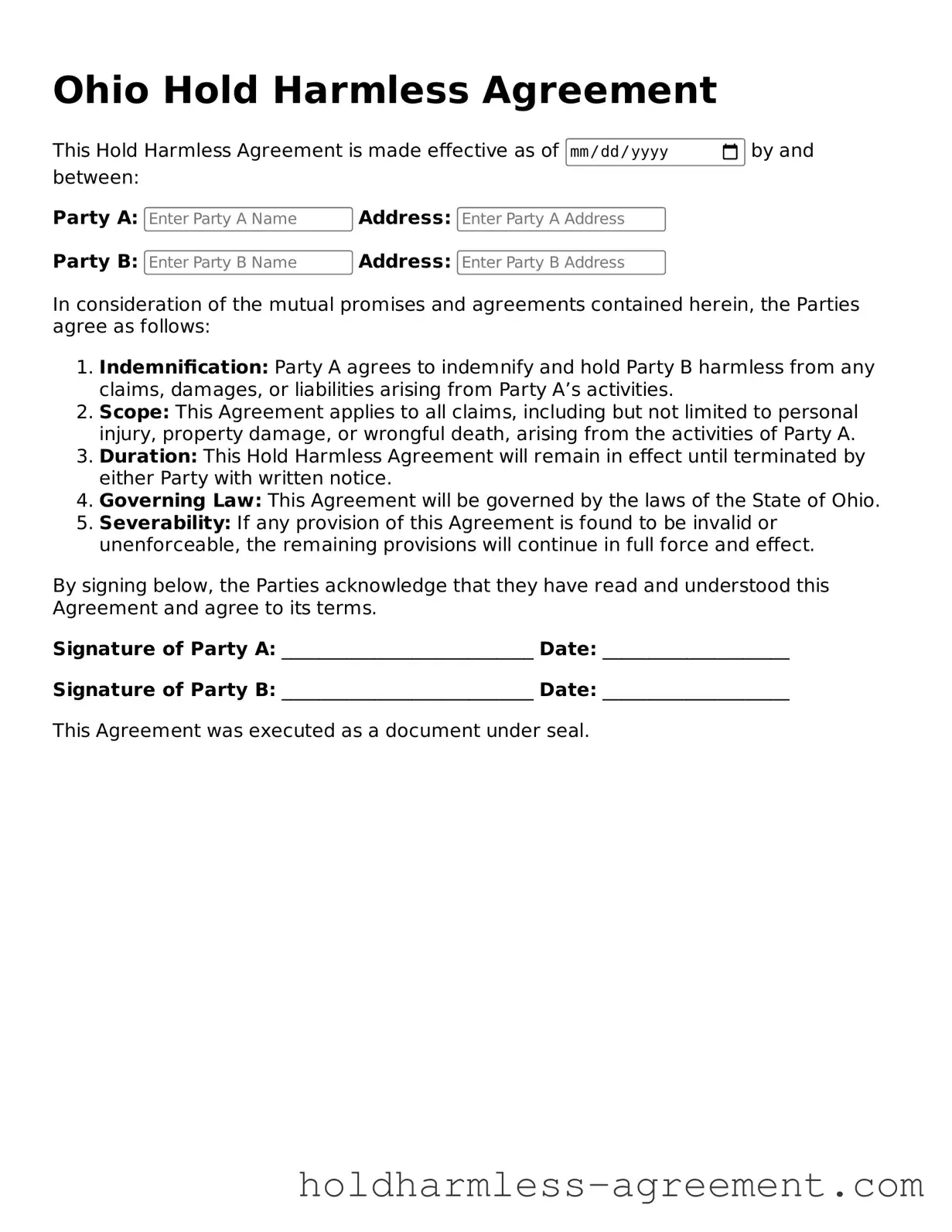What is a Hold Harmless Agreement in Ohio?
A Hold Harmless Agreement is a legal document that protects one party from liability for any damages or injuries that may occur during a specific activity or event. In Ohio, these agreements are commonly used in various situations, such as rental agreements, construction contracts, and event planning. By signing this document, one party agrees not to hold the other responsible for certain risks.
Who typically uses a Hold Harmless Agreement?
Hold Harmless Agreements are often used by:
-
Property owners renting out their space
-
Contractors working on construction projects
-
Event organizers hosting public or private events
-
Organizations offering activities that involve risk, like sports or recreational events
What are the key components of a Hold Harmless Agreement?
Typically, a Hold Harmless Agreement includes the following components:
-
The names of the parties involved
-
A clear description of the activity or event
-
Specific language outlining the extent of liability being waived
-
Signatures of all parties involved
Is a Hold Harmless Agreement legally binding in Ohio?
Yes, a Hold Harmless Agreement can be legally binding in Ohio, provided it meets certain criteria. The agreement must be clear, mutual, and voluntarily signed by all parties. However, courts may not enforce these agreements in cases of gross negligence or willful misconduct.
Can a Hold Harmless Agreement protect against all types of liability?
No, a Hold Harmless Agreement cannot protect against all types of liability. While it can cover many risks, it typically does not shield a party from liability arising from intentional harm, gross negligence, or violations of law. Each agreement should be tailored to the specific circumstances.
How do I create a Hold Harmless Agreement?
Creating a Hold Harmless Agreement involves several steps:
-
Identify the parties involved.
-
Clearly outline the activity or event.
-
Specify the scope of liability being waived.
-
Include any necessary legal language.
-
Have all parties sign and date the document.
It may be beneficial to consult with a legal professional to ensure the agreement is comprehensive and enforceable.
Can I modify a Hold Harmless Agreement after it has been signed?
Yes, a Hold Harmless Agreement can be modified after it has been signed, but both parties must agree to the changes. It’s best to document any modifications in writing and have both parties sign the revised agreement to avoid any confusion later on.
What should I do if I am asked to sign a Hold Harmless Agreement?
If you are asked to sign a Hold Harmless Agreement, take the time to read it carefully. Understand what risks you are agreeing to waive and consider whether you are comfortable with those terms. If you have any questions or concerns, it may be wise to consult with a legal professional before signing.
Are there any specific state laws regarding Hold Harmless Agreements in Ohio?
Ohio does not have specific laws governing Hold Harmless Agreements, but they must comply with general contract law principles. Additionally, certain industries may have regulations that affect how these agreements are enforced. Always ensure that the agreement aligns with any applicable laws or regulations.
